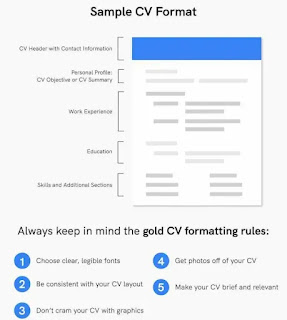How to Make the Best CV | Tips and Guidelines
A CV is often an employer’s first impression of your professional and academic credentials, so it’s important to structure it in a way that best showcases your accomplishments and experience. Certain jobs in academia or medicine might require a CV instead of a resume, and it can also open doors for grant applications,
In this article, we offer a complete guide to writing a powerful CV that will help you stand out to employers, along with easy-to-follow examples.
What is a CV?
A CV—short for the Latin phrase “curriculum vitae” meaning “course of life”—is a detailed document highlighting your professional and academic history. CVs typically include information like work experience, achievements and awards, scholarships or grants you’ve earned, coursework, research projects and publications of your work. A CV is typically two or three pages long, but it’s not unusual for it to be much longer for mid-level or senior job applicants as it serves as a full outline of one’s career accomplishments.
Tips and Guidelines on How to Make the Best CV
Start with creating a CV outline divided into the following sections:
- CV Header with Contact Information
- Personal Profile: CV Objective or CV Summary
- Work Experience
- Education
- Skills
- Additional Sections
Choose clear, and eye-catching fonts
Go for standard fonts: Arial, Tahoma, or Helvetica if you prefer sans-serif fonts.
Use 11 to 12 pt font size and single spacing.
Make your CV brief and relevant
Short, easy, and to the point. Include the things which you think it is important to mention.
Tips and Guidelines (Important Points)
- Always email / share your CV in a .pdf version. The MS Word version will look/display differently at the user’s end depending upon his/her version of the MS Office
- Always rename the CV with your name such as, “Resume_ABC_XYZ”.
- Your CV should not be more than one page long. Cut extra spaces and material that is not needed.
- Your name is repeated in the address also. No need for that.
- No need to give your complete house address. Just mention City name. Address, email and phone numbers should be in one line only.
- Under education no need to mention FSc / matric
- Work Experience and Professional Experience should be merged.
- No need to explain what each organization is. Just mention the name of the organization, your designation there, the time frame you worked there and what you did/achieved while on that role.
Has your CV read by someone whose English is good? There will be many typos and errors.
Please make sure you have followed these guidelines in your resume.
- All dates to be aligned
- All text to be left-aligned
- Either all month names be written in full or just first three letters e.g apr
- Relevant coursework to be 2 lines max
- Work experience should come after education
- Write 2-3 bullet points for each internship
- No photo
- Address, phone, and email to be in one line
- Add a LinkedIn profile link below the address
- Do not add details like nic, father, mother, etc
- Do not include a summary or objective
- If you have a master’s then do not include A/O Level
- Do not include o-level
- Always send your CV or Resume in a PDF
- No need for months of education
- Use action verbs to start a bullet point like analyzed, evaluated, managed, etc
- All bullets start with an action verb
- Each bullet point is to be 1 line. Only in extraordinary cases should it be 2 lines





